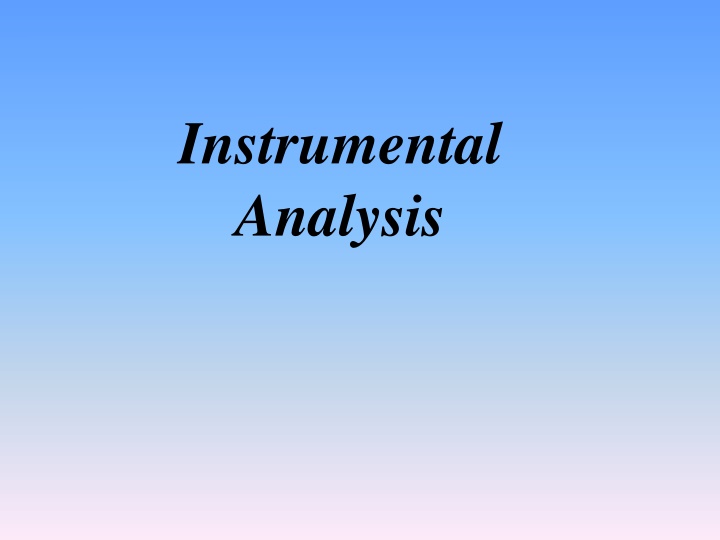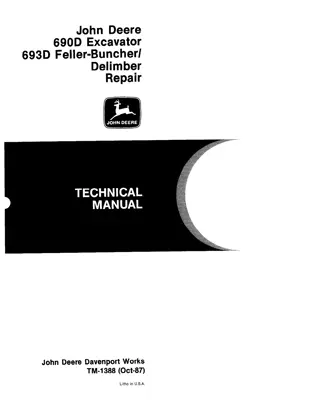
Advanced Methods in Analytical Chemistry Explained
Dive into the world of analytical chemistry, exploring classical and instrumental methods for determining chemical composition. Learn about qualitative and quantitative analysis, classical separation techniques, gravimetric and volumetric measurements, and the evolution of modern analytical techniques.
Download Presentation

Please find below an Image/Link to download the presentation.
The content on the website is provided AS IS for your information and personal use only. It may not be sold, licensed, or shared on other websites without obtaining consent from the author. If you encounter any issues during the download, it is possible that the publisher has removed the file from their server.
You are allowed to download the files provided on this website for personal or commercial use, subject to the condition that they are used lawfully. All files are the property of their respective owners.
The content on the website is provided AS IS for your information and personal use only. It may not be sold, licensed, or shared on other websites without obtaining consent from the author.
E N D
Presentation Transcript
Instrumental Analysis
statical analysis Atomic Spectra Molecular Spectra Fluorescence Phosphorescence Molecular Absorption spectra Spectral Regions Line Spectra Continuous Spectra Instrumental Analysis 1 2 3 4 5 6 7 8 9 - - - - - - - - - Electro magnetic radiation ) ( - - - - - - - - - - - - - - - - - - - - - 10 11 12 13 14 15 16 17 18 19 20 21 22 23 24 25 26 27 28 29 30 Filters Detectors Mono chromates Absorption Cells Ultra violet and visible radiation detectors Infrared detectors Red out(Recorder of detector signal) Ultra violet and visible spectroscopy Beer Low Deviation of Beer Low The reasons of deviation Applications of beer low Single beem Spectrophotometer Double beem Spectrophotometer Chemical Application of UV- Visible Spectra .
: , , . , , : . , . , : . , . . : . . . : . . , , . : 1 - . 2 - 3 - 4 -- . , . 5- -Principles of instrumental analysis 6th Edition, 2007 .Douglas A. Skoog ,James Holler, Stanly R.Crouch. 6-Understanding Chemistry,INSTRUMENTAL ANALYSIS . Jim Clark 2008 7-Analytical Chemistry for Technicians.. Third Edition,2003. by John Kenkel. Southeast Community College, Lincoln, Nebraska Printed in the United States of America
Introduction Analytical chemistry deals with methods determining the chemical composition of sample of matter. Qualitative methods yields information about the identify of atomic or molecular species or the functional groups in the sample. Quantitative methods ,in contrast , provides numerical information as to the relative amount of one or more of these components. Classification of analytical methods Analytical methods are often classified as a being either classical or instrumental classical methods, sometimes called wet-chemical methods preceded instrumental methods by century or more.
Classical methods In the early years of chemistry, most analysis were carried out by separating the components of interest (the analytes) by precipitation, extraction or distillation . for qualitative analysis, the separated components were then treated with reagents that yielded products that could be recognized by their colors, their boiling or melting points, their solubilities in a series of solvents, their odors, their optical activates or their refracts indexes for quantitative analysis, the amount of analyte was determined by gravimetric measurement. or by volumetric
In gravimetric measurements the mass of analyte or some compounds produced from the analyte was determined . in volumetric, also called titrimetric, procedures, the volume or mass of standerd reagents required to react completely with analyte was measured . These classical methods for separating and determinating analytes are still used in many laboratories . the extent of their general application is, however ,decreasing with the passage of time and with the advent of instrumental methods to supplant them.
Instrumental methods Early in the twentieth century, scientists to exploit phenomena other than those used of classical methods for solving analytical problem . thus, measurements of such analyte physical properties as conductivity, electrode potential, light absorption or emission, mass-to-charge ratio, and fluorescence began to be used for quantitative analysis furthermore ,highly efficient chromatographic and electrophoresis techniques began to replace distillation ,extraction and precipitation for the separation of components of complex mixtures prior to their qualitative or quantitative determination these newer methods for separating and determination chemical species are known instrumental methods of analysis.
Type of instrumental methods Chemical and physical characteristics are very useful for qualitative or quantitative analysis .the table1 lists most of characteristics properties that are currently used for instrumental analysis. Characteristics properties Instrumental methods Emission of radiation Emission spectroscopy ,fluorescence, phosphorescence Absorption of radiation Spectrophotometry and photometry Scattering of radiation Refraction of radiation Turbidimetry .. Reflractometry Diffraction of radiation X-ray and electron diffraction methods Rotation of radiation Electrical potential Electrical charge Electrical current Electrical resistance Mass Mass-to-charge ratio Rate of reaction Thermal characteristics Polarimetry, optical rotary Potiantiometry Coulometry Amperometry ,polarography Conductometry Gravimetry Mass spectroscopy Kinetic methods Thermal gravimetry ,differential thermal analysis Radioactivity Activation and isotope dilution methods




